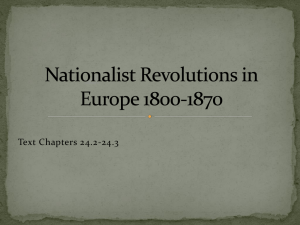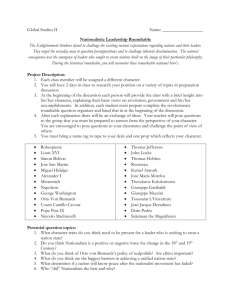1010 Quick Study Guide
advertisement
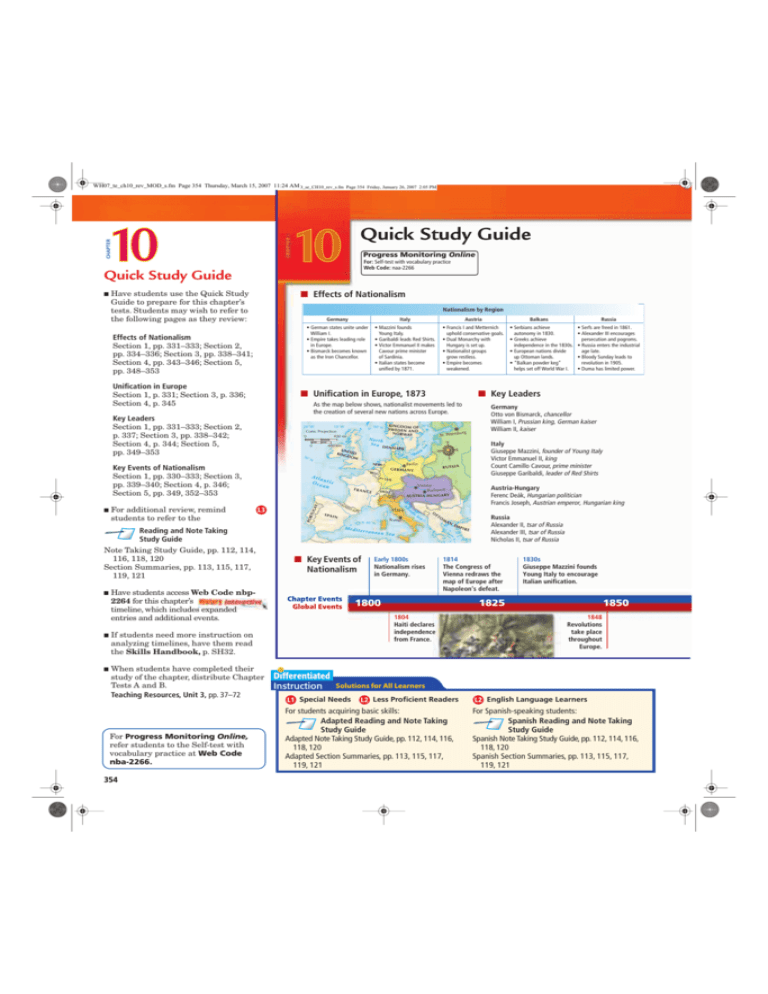
WH07_te_ch10_rev_MOD_s.fm Page 354 Thursday, March 15, 2007 11:24 AM WH07MOD_se_CH10_rev_s.fm 10 Germany Italy Austria • German states unite under William I. • Empire takes leading role in Europe. • Bismarck becomes known as the Iron Chancellor. • Mazzini founds Young Italy. • Garibaldi leads Red Shirts. • Victor Emmanuel II makes Cavour prime minister of Sardinia. • Italian states become unified by 1871. • Francis I and Metternich uphold conservative goals. • Dual Monarchy with Hungary is set up. • Nationalist groups grow restless. • Empire becomes weakened. CHAPTER ■ Unification in Europe, 1873 0 50° N K Ba FRAN CE ■ If students need more instruction on analyzing timelines, have them read the Skills Handbook, p. SH32. ■ When students have completed their study of the chapter, distribute Chapter Tests A and B. Teaching Resources, Unit 3, pp. 37–72 AL POR TUG Italy Giuseppe Mazzini, founder of Young Italy Victor Emmanuel II, king Count Camillo Cavour, prime minister Giuseppe Garibaldi, leader of Red Shirts E W S RUSSIA Vienna Budapest SWITZ. EES MT I TA LY S. IN Ro m e 40° N Medit er ranea ■ Key Events of Nationalism Chapter Events Global Events Austria-Hungary Ferenc Deák, Hungarian politician Francis Joseph, Austrian emperor, Hungarian king AU S T R I A - H U N G A R Y at ri Have students access Web Code nbp2264 for this chapter’s timeline, which includes expanded entries and additional events. c GERMANY Ad Note Taking Study Guide, pp. 112, 114, 116, 118, 120 Section Summaries, pp. 113, 115, 117, 119, 121 urg LUX. PY RE N S PA lti Berlin ALPS L3 St. Petersb N DENMAR BELG. At l an Oce tic an KINGDOM 20° E S WED EN A OF ND N O R WAY No r th Sea 400 km UN KIN ITED GDO M Reading and Note Taking Study Guide 354 60° N NETH. Key Events of Nationalism Section 1, pp. 330–333; Section 3, pp. 339–340; Section 4, p. 346; Section 5, pp. 349, 352–353 For Progress Monitoring Online, refer students to the Self-test with vocabulary practice at Web Code nba-2266. 0° Russia • Serfs are freed in 1861. • Alexander III encourages persecution and pogroms. • Russia enters the industrial age late. • Bloody Sunday leads to revolution in 1905. • Duma has limited power. Germany Otto von Bismarck, chancellor William I, Prussian king, German kaiser William II, kaiser a 10° W Conic Projection 0 400 mi Se 20° W Balkans • Serbians achieve autonomy in 1830. • Greeks achieve independence in the 1830s. • European nations divide up Ottoman lands. • “Balkan powder keg” helps set off World War I. ■ Key Leaders As the map below shows, nationalist movements led to the creation of several new nations across Europe. Key Leaders Section 1, pp. 331–333; Section 2, p. 337; Section 3, pp. 338–342; Section 4, p. 344; Section 5, pp. 349–353 ■ For: Self-test with vocabulary practice Web Code: naa-2266 Nationalism by Region Unification in Europe Section 1, p. 331; Section 3, p. 336; Section 4, p. 345 For additional review, remind students to refer to the Progress Monitoring Online ■ Effects of Nationalism Have students use the Quick Study Guide to prepare for this chapter’s tests. Students may wish to refer to the following pages as they review: Effects of Nationalism Section 1, pp. 331–333; Section 2, pp. 334–336; Section 3, pp. 338–341; Section 4, pp. 343–346; Section 5, pp. 348–353 ■ Quick Study Guide 10 Quick Study Guide ■ Page 354 Friday, January 26, 2007 2:05 PM ic Se O a TT O M AN EM n Sea Early 1800s Nationalism rises in Germany. PIR E Russia Alexander II, tsar of Russia Alexander III, tsar of Russia Nicholas II, tsar of Russia 1814 The Congress of Vienna redraws the map of Europe after Napoleon’s defeat. 1800 1830s Giuseppe Mazzini founds Young Italy to encourage Italian unification. 1825 1804 Haiti declares independence from France. 1850 1848 Revolutions take place throughout Europe. Solutions for All Learners L1 Special Needs L2 Less Proficient Readers For students acquiring basic skills: Adapted Reading and Note Taking Study Guide Adapted Note Taking Study Guide, pp. 112, 114, 116, 118, 120 Adapted Section Summaries, pp. 113, 115, 117, 119, 121 L2 English Language Learners For Spanish-speaking students: Spanish Reading and Note Taking Study Guide Spanish Note Taking Study Guide, pp. 112, 114, 116, 118, 120 Spanish Section Summaries, pp. 113, 115, 117, 119, 121 0354_wh09MODte_Ch10rev_s.fm Page January 355 Thursday, June WH07MOD_se_CH10_rev_s.fm Page 355 Friday, 26, 2007 2:12 PM21, 2007 6:38 PM ■ Cumulative Review ■ Connections To Today Record the answers to the questions below on your Concept Connector worksheets. 1. 1. 2. 3. Empire In 1871, German nationalists celebrated the birth of the second Reich, or empire. They called it that because they considered Germany heir to the Holy Roman Empire. Compare the second Reich to the Holy Roman Empire. How were they similar? How were they different? Think about the following: • structure of government • power of the kaiser and emperor • the rule of William II and Otto I • who had voting rights • who held the real power 2. Nationalism During the early 1800s, nationalist rebellions erupted in the Balkans and elsewhere along the southern fringe of Europe. Between 1820 and 1848, nationalist revolts exploded across Italy. Compare and contrast Greece’s unification and nationalism to Italy’s. Think about the following: • the empires they revolted against • which countries they turned to for help • the structure of their governments Nationalism: The State of Nationalism Today You’ve read how nationalism was a strong enough force in the 1800s to help unify nations, such as Italy and Germany, but threatened to destroy the Austrian and Ottoman empires. Do you think that nationalism is still a force in the world today? Conduct research to learn more about current nationalist issues. You may want to focus your research on Kurdistan, Northern Ireland, the former Yugoslavia, or Russia. Write two paragraphs on nationalism today, citing examples from current events to support your answer. Economic Systems: Social Welfare Programs Under Otto von Bismarck, Germany was a pioneer in social reform, providing several social welfare programs to its citizens. By the 1890s, Germans had health and accident insurance as well as retirement benefits. Social welfare programs soon spread to other European nations. Conduct research to learn more about social welfare programs today. Compare social welfare programs in one country in Europe with those in the United States. How are they similar? How are they different? Nationalism During the 1800s, various subject peoples in the Balkans revolted against the Ottoman empire, hoping to set up independent states of their own. A complicated series of crises and wars soon followed. Take notes on the situation in the Balkans between 1800 and the early 1900s. Why did competing interests in the Balkans lead the region to be called a powder keg? 1861 Tsar Alexander II frees the serfs. 1870 Bismarck provokes Franco-Prussian War to create a unified German empire. 1905 Revolution breaks out in St. Petersburg after Bloody Sunday massacre. 1875 1861 The Civil War begins in the United States. For: Interactive timeline Web Code: nbp-2264 1900 1898 The Philippines declares independence from Spain. L2 Less Proficient Readers Use the following study guide resources to help students acquiring basic skills: Adapted Reading and Note Taking Study Guide Adapted Concept Connector, pp. 270, 291 Cumulative Review 1. Responses should compare and contrast the second Reich with the Holy Roman Empire and examine the forms of government, the styles of the rulers, and the status of civil rights under each regime. Responses might mention William II’s belief in his divine right to rule Germany. 2. Responses should compare and contrast the main reasons for, the role of nationalism in, and the results of unification of Greece and Italy in the mid1800s. Responses should mention Italy’s alliances with France and Prussia and Greece’s assistance from Russia. 3. Responses should note that the collapse of the Ottoman empire combined with nationalist feelings led to the formation of many small nations, several of which were unstable and experienced much ethnic strife. These nations also drew the competing interests of the more powerful European nations. Later, a crisis would call into play a complex set of alliances between these greater powers and the Balkan nations, precipitating World War I. Connections to Today 1925 1914 World War I begins. Solutions for All Learners L1 Special Needs Tell students that the main concepts for this chapter are Empire and Nationalism and ask them to answer the Cumulative Review questions on this page. Discuss the Connections to Today topics and ask students to answer the questions that follow. L2 English Language Learners Use the following study guide resources to help Spanish-speaking students: Spanish Reading and Note Taking Study Guide Spanish Concept Connector, pp. 270, 291 1. Responses should be at least two paragraphs long and include examples and details from current world events to support their conclusions. 2. Responses should compare at least one type of social welfare program in the United States today, such as Medicare, with one in a European country, such as the National Health Service in Great Britain. L3 For additional review of this chapter’s core concepts, remind students to refer to the Reading and Note Taking Study Guide Concept Connector, pp. 260,277 355 0354_wh09MODte_Ch10rev_s.fm Page 356 Thursday, June 21, 2007 6:39 PM WH07MOD_se_CH10_rev_s.fm Page 356 Friday, January 26, 2007 3:44 PM Chapter Assessment Chapter Assessment Terms, People, and Places Terms, People, and Places 1. anarchist 6. pogrom Match the following definitions with the terms listed below. 2. Duma 7. emigration 3. kaiser 8. Realpolitik 4. emancipation 9. social welfare chancellor Realpolitik kaiser social welfare anarchist 5. chancellor Main Ideas 10. Bismarck’s goal was to increase the power of the rulers of Prussia. He achieved that goal by using Realpolitik strategies: war, deceit, measured reforms, and propaganda. 11. It became an industrial giant, sought to keep France weak, and built alliances with Austria and Russia. 12. Camillo Cavour consolidated some states around Sardinia. Cavour then allied with France in case of a war with Austria and later provoked that war, which Sardinia and France won. Several northern states then broke away from Austria and joined Sardinia. In the south, Giuseppe Garibaldi took over the southern states, which he gave up so that they could unite with the northern states under the rule of Victor Emmanuel, Italy’s first king. 13. Nationalist movements in both empires brought about unrest and demands for democratic reforms that weakened the ruling empire. The Ottoman empire’s situation was complicated by the interference of European nations. 14. The Russian economy was based on agriculture and serf labor, and the nobles and the tsars resisted changes that might undermine their power. Chapter Focus Question 15. Nationalism and the demand for reform led to the unification of Germany and its new position as a major power. They also led to the unification of Italy, the collapse of the Austrian and Ottoman empires, and revolution in Russia. Critical Thinking 16. Bismarck was a practical practitioner of Realpolitik, not a romantic. To him nationalism was a tool to use to achieve his goals, not an ideal to strive for. 17. Both Bismarck and Cavour employed Realpolitik, and both wanted to increase the power of the rulers they 356 1. 2. 3. 4. 5. 6. 7. 8. 9. emigration emancipation pogrom Duma Critical Thinking someone who wants to abolish all government elected national legislature in Russia emperor of Germany granting of freedom to serfs the highest official of a monarch violent attack on a Jewish community movement away from one’s homeland realistic politics based on the needs of the state programs to help people in need Main Ideas Section 1 (pp. 330–333) 10. What was Chancellor Otto von Bismarck’s main goal? What policies did he follow to meet that goal? Section 2 (pp. 334–337) 11. How did Germany increase its power in the late 1800s? Section 3 (pp. 338–342) 12. Summarize the process by which Italy unified. Include information on the leaders who helped unify Italy. Section 4 (pp. 343–346) 13. How did nationalism contribute to the decline of the Hapsburg and Ottoman empires? Section 5 (pp. 348–353) 14. Why was Russia slow to industrialize? ● Writing About History Writing a Persuasive Essay Some people define nationalism as excessive, narrow, or jingoist patriotism. A nationalist might be described as someone who boasts of his patriotism and favors aggressive or warlike policies. The rise of nationalism in Europe led to both division and unification. For example, it unified Germany, but it led Russian tsars to suppress the cultures of national minorities within the country. Nationalism remains a powerful force to this day for unifying countries and for sparking rivalries, conflicts, and bloodshed. Write a persuasive essay in which you support or oppose the idea that nationalism is an excessive form of patriotism. Chapter Focus Question 15. What effects did nationalism and the demand for reform have in Europe? 16. Make Comparisons How did the nationalism represented by Bismarck differ from that embraced by liberals in the early 1800s? 17. Make Comparisons Compare and contrast the goals and methods of Cavour in Italy and Bismarck in Germany. 18. Analyze Information Tsar Alexander II declared that it is “better to abolish serfdom from above than to wait until it will be abolished by a movement from below.” Explain his statement. 19. Geography and History How did regional differences contribute to continued divisions in Italy after unification? 20. Analyzing Cartoons How does this French cartoonist view Bismarck? Explain. 21. Predict Consequences Based on your reading of the chapter, predict the consequences of the following: (a) defeat of France in the Franco-Prussian War, (b) growth of German nationalism and militarism in the late 1800s, (c) failure to satisfy nationalist ambitions in Austria-Hungary, and (d) weakening of the Ottoman empire. Prewriting • Collect the examples and evidence that you need to support your position convincingly. • Use a graphic organizer to list points on both sides of the issue. Drafting • Focus on a thesis statement. Clearly state the position that you will prove. Use the rest of your introduction to provide readers with the necessary context about the issue. • Acknowledge the opposition by stating, and then refuting, opposing arguments. Revising • Use the guidelines for revising your essay on page SH17 of the Writing Handbook. served. However, Cavour believed in liberal ideals, while Bismarck was a monarchist and conservative. 18. Sample: He felt that if he did not end serfdom himself, revolutionaries would eventually do so. By freeing the serfs, he hoped to avoid revolution. 19. People still had local loyalties rather than loyalty to the nation. Southern Italy was poor and rural, while northern Italy was urban and more prosperous. 20. The cartoonist portrays Bismarck as a greedy ogre, gobbling everything in sight. 21. Sample: (a) instability in Europe, fear of Germany in Britain and other countries; (b) attempts to gain greater and greater territory, which could lead to war; (c) unrest and civil war; (d) the breakup of the Ottoman empire into small, unstable countries. 0354_wh09MODte_Ch10rev_s.fm Page 357 Thursday, WH07MOD_se_CH10_rev_s.fm Page 357 Tuesday, January 30, 2007 June 11:39 21, AM 2007 6:39 PM Document-Based Assessment On the Crimean Front In 1853, the British, the French, and their allies took on the vast Russian empire in the Crimean War. Called a “perfectly useless modern war,” it was fought in the Black Sea region, although major campaigns took place well beyond that area. Like all wars, it was grim. More than 500,000 people died during the conflict. Document A “[The Crimean War] was one of the last times that the massed formations of cavalry and infantry were employed—the thin red line was to disappear forever. Henceforward, armies would rely on open, flexible formations and on trench warfare. For the British, it was the end of an era: never again would their soldiers fight in full-dress uniform. Never again would the colors be carried into the fray and the infantry would no longer march into battle to the stirring tunes of regimental bands. The Crimean War ushered in the age of the percussion cap rifle. The new Minie rifle was the decisive weapon, replacing the clumsy . . . musket. The weapon fired a cartridge, not a ball, with accuracy far superior to the old firelocks. . . .“ Document C ■ To help students understand the documents on this page, give them the following TIP: Study each document to assess its context and purpose. Use your knowledge of the subject as well as the information given in the document and the attribution line to determine who created it, when, and why. ■ To provide students with further practice in answering DocumentBased Assessment Questions, go to Document-Based Assessment, pp. 66–78 ■ If students need more instruction on synthesizing information, have them read the Skills Handbook, p. SH35. “Men sent in there [French hospital] with fevers and other disorders were frequently attacked with the cholera in its worst form, and died with unusual rapidity, in spite of all that could be done to save them. I visited the hospital, and observed that a long train of . . . carts, filled with sick soldiers, were drawn up by the walls. . . . the quiet that prevailed was only broken now and then by the moans and cries of pain of the poor sufferers in the carts.“ —From The British Expedition to the Crimea by W. H. Russell, Times correspondent Document D —From The Road to Balaklava, by Alexis S. Troubetzkoy Document B “I see men in hundreds rushing from the Mamelon [bastion] to the Malakoff [tower]. . . . with all its bristling guns. Under what a storm of fire they advance, supported by that impenetrable red line, which marks our own infantry! The fire from the Malakoff is tremendous—terrible. . . . Presently the twilight deepens, and the light of rocket, mortar, and shell falls over the town.“ Document-Based Assessment Treating Cholera —From Journal kept during the Russian War: From the Departure of the Army from England in April 1854, to the Fall of Sebastopol, by Mrs. Henry Duberly, an army wife Analyzing Documents Use your knowledge of the Crimean War and Documents A, B, C, and D to answer questions 1–4. 1. According to Document A, the Crimean War marked the end of A private soldiers in war. B most small wars in Europe. C old ways of fighting. D soldiers dying of diseases in military hospitals. 2. With what purpose did the author write Document B? A to help people understand the dangers of fighting with new weapons B to criticize inadequate technology C to describe the state of mind of the soldiers D to make the British public understand how quickly the war was progressing 3. With what purpose did the artist create Document D? A to help the British public understand the dangers of fighting with new weapons B to criticize the inadequate state of army hospitals C to describe the dangers of soldiering and soldiers’ valor D to make the British public understand the toll that disease was taking on soldiers 4. Writing Task Suppose you are a surgeon working near the war front. Write a brief letter home describing your impressions. Use the four documents along with information from the chapter to write your letter. ● Writing About History As students begin the assignment, refer them to page SH16 of the Writing Handbook for help in writing a persuasive essay. Remind them of the steps they should take to complete their assignment, including prewriting, drafting, and revising. For help in revising, remind them to use the guidelines on page SH17 of the Writing Handbook. Students’ persuasive essays should present a clear thesis with a specific point of view, include sequenced arguments supported by facts and details, and provide at least one oppositional argument. Essays should also be thoughtfully written, stay on the topic, and be free of grammatical and spelling errors. For scoring rubrics for writing assignments, see Assessment Rubrics, p. 8. Answers 1. C 2. A 3. D 4. Letters should show a clear understanding of the medical issues during the Crimean War and should be written in the first person. They should also use specific evidence from the documents and the chapter to support their conclusions. 357
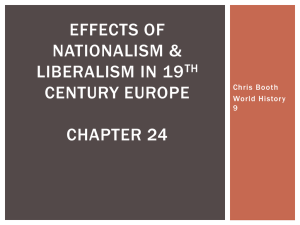
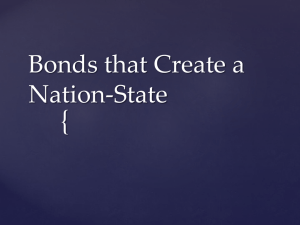
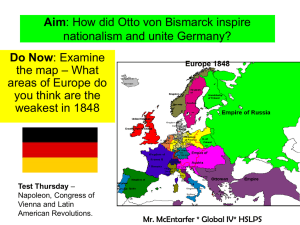
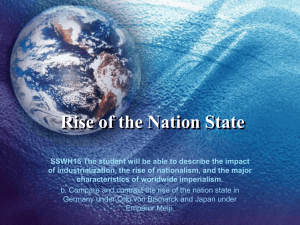
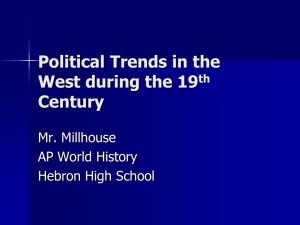
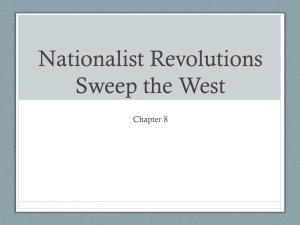
![“The Progress of invention is really a threat [to monarchy]. Whenever](http://s2.studylib.net/store/data/005328855_1-dcf2226918c1b7efad661cb19485529d-300x300.png)

